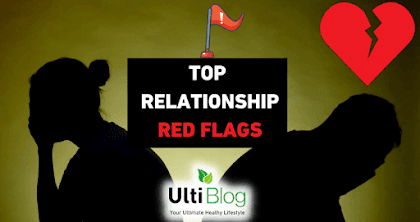
Acute Stress Disorder (ASD) and Post-traumatic Stress Disorder (PTSD) are two of the most common trauma-related mental disorders that individuals may experience after a traumatic event.
While they may have some similarities, they also have significant differences in their symptoms and treatment approaches. This blog post will explain the similarities between ASD and PTSD to help individuals understand these disorders better.
How is acute stress disorder vs. PTSD similar?
ASD and post-traumatic stress disorder (PTSD) are similar. This means they both happen when someone has a bad experience. Both of them have intrusive symptoms that make the person have bad thoughts, not want to do things, and be really anxious.
Both anxiety disorders can make it hard for people to carry on with their daily life. These disorders can also make it harder for people to enjoy life.
Causes of acute stress disorder & PTSD
When something scary or bad happens, our brain can get affected too. It makes us feel like we need to run away or fight. This can cause different physical and mental problems in people with anxiety, panic disorder or PTSD.
Traumatic events can cause both ASD and PTSD, including:
- Physical or sexual assault
- Natural disasters (e.g., hurricanes, earthquakes, wildfires)
- Combat exposure
- Terrorist attacks
- Serious accidents (e.g., car accidents, plane crashes)
- Life-threatening illness or injury
- Childhood abuse or neglect
- Witnessing violence or death
- A sudden and unexpected loss of a loved one
- Traumatic childbirth experience
Triggers of acute stress disorder and PTSD
- Intrusive memories or flashbacks of the traumatic experiences
- Avoidance of places, people, or situations that may remind the person of the traumatic event
- Hyperarousal, or heightened sensitivity to potential danger or threat
- Hypervigilance, constantly scanning the environment for potential danger
- Feeling on edge or easily startled
- Difficulty sleeping or concentrating
- Irritability or angry outbursts
- Negative thoughts or feelings, such as guilt, shame, or hopelessness
- Detachment or feeling emotionally numb
- Loss of interest in activities once enjoyed
Acute stress disorder and PTSD symptoms
ASD and PTSD are similar, but the main difference between stress disorders is how long the symptoms last. Acute stress disorder symptoms usually last for at least three days and up to one month. PTSD lasts longer than one month.
- Intrusive memories, thoughts, or flashbacks of the traumatic event
- Nightmares or recurring dreams about the traumatic event
- Avoidance of places, people, or situations that may remind the person of the traumatic event
- Difficulty sleeping or concentrating
- Hypervigilance or constantly being on guard for potential danger
- Easily startled or irritable
- Negative thoughts or feelings, such as guilt, shame, or hopelessness
- Detachment or feeling emotionally numb
- Loss of interest in activities once enjoyed
- Physiological reactions, such as rapid heart rate or sweating, when reminded of the traumatic event
- Dissociative symptoms
- Hyperarousal symptoms
Diagnosis of ASD and PTSD
ASD and PTSD are diagnoses made by a doctor who specializes in mental health. They are called psychiatrists or psychologists. The review may include an assessment of the individual's symptoms, medical history, and any past trauma.
The DSM-5 provides specific diagnostic criteria for both disorders. A mental health professional will use certain rules to decide if someone has ASD or PTSD. These rules help them know if the person meets the requirements for these conditions.
Treatment for ASD and PTSD
Therapy
- Cognitive Behavioral Therapy (CBT) is a way to help people who have had bad experiences. It can help them to think differently and do different things, so they don't feel so bad.
- Prolonged Exposure Therapy (PET) can help individuals confront and process traumatic memories and reduce avoidance behaviors.
- Eye Movement Desensitization & Reprocessing (EMDR) helps individuals process traumatic memories through guided eye movements.
- Group therapy can provide support and validation from others who have experienced similar traumas.
- Mindfulness activities like meditation and yoga can help people deal with stress and stay in control of their emotions.
- Family therapy can help improve communication and support between family members.
- Art therapy or other expressive therapies can help individuals express and process emotions related to the traumatic event.
- Complementary therapies like acupuncture or massage can help make symptoms of stress go away and make you feel more relaxed.
Medication
- Antidepressant medications or anti-anxiety medications can help manage symptoms of depression, anxiety, and sleep disturbances.
Self-Care activities
- You should do physical activities like walking, running, and swimming every day.
- Do things to help you relax, like taking deep breaths, sitting quietly with your eyes closed, or doing yoga.
- Spend time in nature or engage in outdoor activities.
- Eat healthy foods and don't use drugs or drink too much alcohol.
- Establish a regular sleep routine and practice good sleep hygiene.
- Connect with supportive friends or family members.
- Engage in creative or expressive activities like art, music, or writing.
- Practice mindfulness and being present at the moment.
- Take breaks or time off when needed to prevent burnout or overload.
Coping strategies for ASD and PTSD
- Practice relaxation techniques like deep breathing, progressive muscle relaxation, or guided imagery.
- Doing a physical activity like sports or running can help your body feel better and reduce stress.
- Use grounding techniques, such as focusing on the present moment or using sensory cues, to manage intrusive thoughts or flashbacks.
- Establish a regular sleep routine and practice good sleep hygiene.
- Seek social support from friends, family, or support groups.
- Take care of yourself by doing things like taking a warm bath or listening to calming music.
- Use positive self-talk and challenge negative thoughts.
- Set realistic goals and celebrate achievements.
- Use humor or engage in enjoyable activities to improve mood and reduce stress.
Conclusion
It's essential for those experiencing either condition to get help from mental health professionals who understand the nuances of both states of mental illness and can customize treatments accordingly.
While acute stress disorder and PTSD differ in severity, both need immediate action and early intervention to prevent them from further complicating - a heavy burden that no one needs to bear alone.
FAQ
What is the difference between acute stress disorder and PTSD?
Acute stress disorder is a response to something scary or dangerous that does not last very long. Post-traumatic stress disorder (PTSD) is when someone has a longer-lasting reaction to the same kind of thing, and it can go on for months or even years.
Is there a difference between the treatments for the two disorders?
Acute stress disorder and PTSD are two different things. They need different kinds of help. It is a good idea to talk to a mental health professional who can make a plan just for you.
References
- URMC: Acute Stress Disorder (ASD) and Post Traumatic
- UNIVERSITY OF PENNSYLVANIA: POST-TRAUMATIC STRESS DISORDER
- The Recovery Village: Acute Stress Disorder
- University of Rochester Medical Center Rochester: Post-Traumatic Stress Disorder
- Weill Cornell Medicine; Post Traumatic Stress Disorder (PTSD)
- The Recovery Village: Acute Stress Disorder
- MODULE 5: TRAUMA- AND STRESSOR-RELATED DISORDERS
- Acute Stress Disorder - Alexander H. Jordan
- Understanding PTSD and PTSD Treatment
- Trends in Medication Prescribing in Patients With PTSD From 2009 to 2018: A National Veterans Administration Study
- How to Overcome Your PTSD Triggers - Red Oak Recovery
https://bit.ly/3ZSVaXX

Comments
Post a Comment